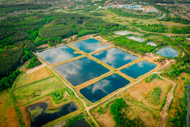Why You Should Pay Attention to Your Local Water Quality
Posted by admin on Aug 13th 2021
In our previous article, “Why Water Quality is Important,” we discussed the general importance of water quality as it pertains to your home and family. As a logical follow-up, this article will discuss the importance of finding and understanding the quality of your local water supplies.

The fact is, no two regional water supplies will be exactly the same. Location, climate, soil, mineral content, wildlife, agriculture, and industry can all affect the quality of the surface water and groundwater in the area. Because of this, the first step toward understanding what is in your local water supply is to obtain a copy of your local water quality report. A water quality report – or Consumer Confidence Report (CCR), officially – is provided for free upon request by customers from their community water supplier. For non-public water supplies, water quality information must be requested directly from the owner of the private water source.
Your local CCR will detail the source of your water supply, the contaminants present in the water and their levels, how those contaminant levels compare to national water quality standards, and a brief overview of the potential effects of those contaminants. You can request this report each year (CCRs are released annually) to keep updated on the specific contaminants present in your water supply and how their levels may affect you. Understanding your local CCR can help determine the best home drinking water filtration system you need for your home and family.

If you think that poor water quality is something you can overlook or something that cannot affect your specific water supply, take a look at the list of the worst states for water quality (in descending order):
- Puerto Rico: Due in large part to massive water infrastructure damage from hurricanes over the last several years.
- Georgia: Due to highly polluted rivers, streams, and wells, as well as due to PFC (i.e., PFOA and PFOS – “forever chemicals) groundwater pollution from three military bases in the state.
- Arizona: Due to high levels of the carcinogenic chromium-6, as well as a high concentration of PFCs in the groundwater.
- Washington: Due to high levels of carcinogenic compounds, including arsenic, chromium, nitrate, radon, radium, and uranium.
- New Jersey: Due to high levels of PFCs and lead in many of their cities’ drinking water.
- Ohio: Due to high levels of lead and harmful minerals and compounds from mining areas.
- California: Due to arsenic, uranium, and nitrate contamination in agricultural areas.
- Florida: Due to regular hurricane and storm damage, algal blooms, and high levels of PFCs in the water.
- Texas: Due to lead and arsenic contamination in rural water supplies.
- Pennsylvania: Due to contamination from mining, gas, and oil wells, hydraulic fracking, and the high level of PFCs in the water.
The list of worst states for water quality highlights several sources and means by which your water quality can be compromised, including natural disasters, agricultural and industrial pollution, heavy metal deposits, resource mining and harvesting, and more. While these causes are not mutually exclusive, they will vary from region to region, reinforcing the necessity of learning your specific area’s water quality.
In addition to the pollution sources listed among the worst of the states above, there are many more mundane sources of routine groundwater contamination. These include:
- Waste – both human and animal waste products
- Landfills – a major contributor to groundwater pollution due to seepage from the refuse in landfills
- Air pollution – airborne contaminants can be introduced to both groundwater and surface water through rain
- Fuel – any sources of fossil fuels can contribute to water pollution through fuel leaks and air pollution, and after rains, gas and tire particle runoff can enter groundwater
- Septic systems – private septic tanks can leak waste and other contaminants into groundwater
- Pesticides – not limited to large agricultural farms, home pesticide usage can contribute to groundwater pollution

The severity of these water contamination sources will vary based on population, environment, water proximity, and infrastructure quality. This gives you another reason to learn about your specific water quality report.
Ultimately, water contamination comes from such a diverse range of causes that you cannot assume that any water filtration solution will suit your needs, and that any water filter will be as effective as any other. Picking a product based on what is on sale or on one specific contaminant is not enough; a better solution is to find a comprehensive system to filter out contaminants that are in your water now or may be present in the future. And the first step toward this course of action is to learn and understand the specific water contamination issues that may be burdening your neighborhood. When you pay attention to your local water quality, and when you understand the contaminants and their effects in your water supply, you gain the knowledge necessary to find the right water filtration product for your home.

